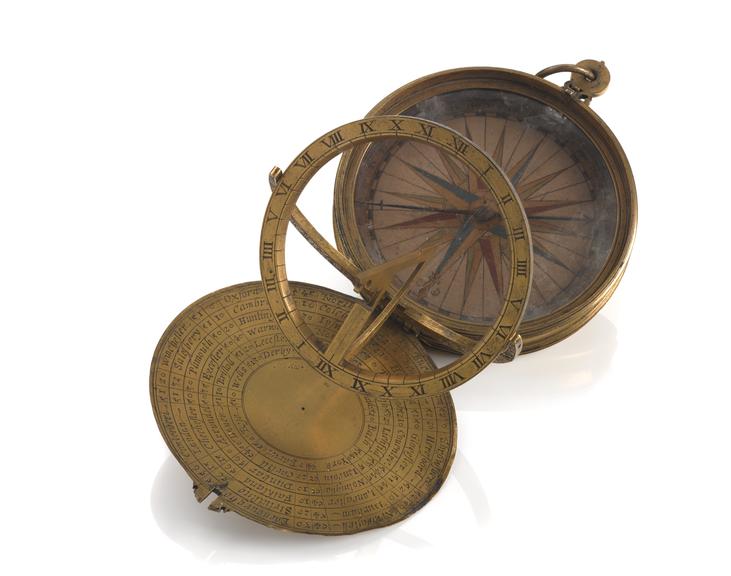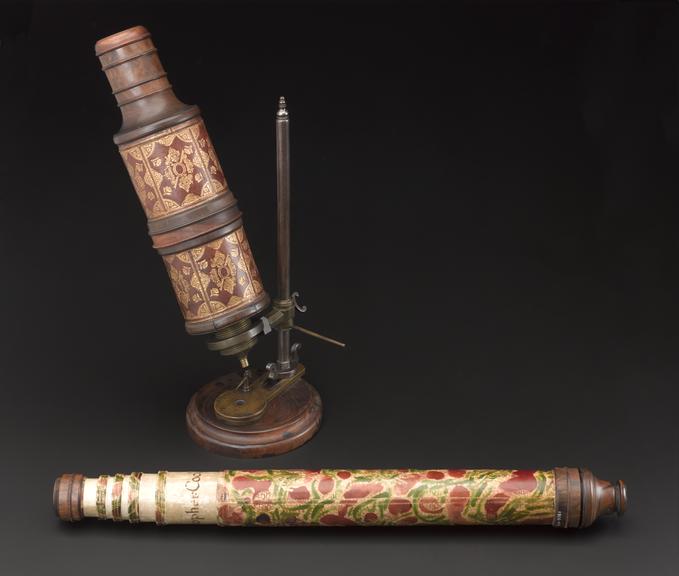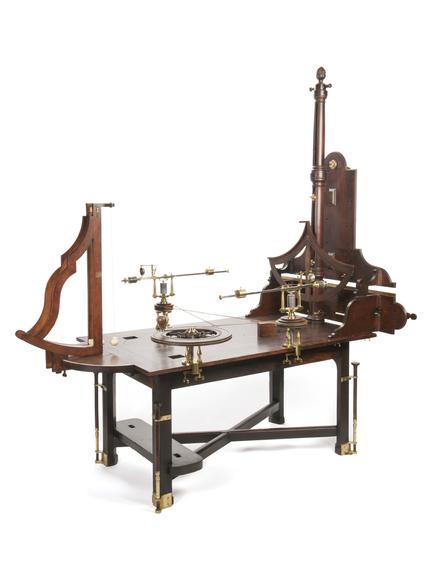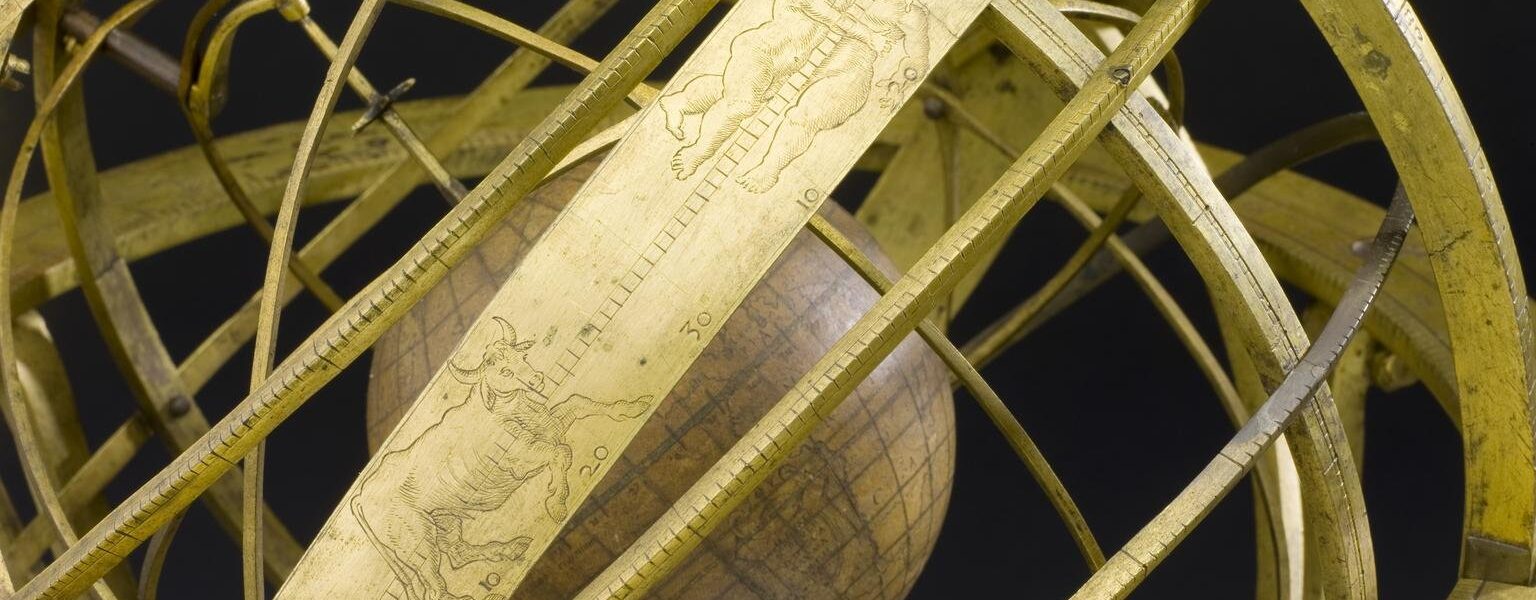Stop 1: Compendium by Elias Allen

Begin your tour by visiting Elias Allen’s (c.1588–1653) instrument-making workshop. Here, you can see some of his tools, instruments on offer, and the bustle around his London workshop.
Allen created instruments for royalty as well as the leading mathematicians of his time; his London workshop became a hub for mathematical debates. It was so popular that some mathematicians used his workshop to deliver and collect letters from others in their circle because they knew they’d visit before long!
The first maker in England to make a living solely from this craft, Allen passed on his skill and experience to his apprentices, who would go on to become eminent craftsmen in their own right.
Can you find this compendium – a pocket device for telling the time, date and location – a 17th-century equivalent of a smart watch?
Stop 2: Robert Hooke type microscope

While the foundation of the Royal Society in 1660 provided a new forum for discussing and sharing ideas, many instrument-makers also played a vital role underpinning such breakthroughs in science.
Published in 1665 by Robert Hooke, Micrographia revealed striking features of tiny objects in detail. Its precise drawings, descriptions and observations presented in easily accessible language offered people a new perspective to view the world. Bringing great surprise and wonder, the drawings in Micrographia were made possible by the long-term partnership between Hooke and instrument-maker, Christopher Cock.
You can see the original microscope they designed together, as well as some of Hooke’s drawings of tiny insects, rocks, and plants in the gallery!
How many hairs can you count on his famous drawing of a flea?
Stop 3: Small orrery by Benjamin Martin

The study of science was not limited to the elites – instrument-makers recognised the wider appeal of simpler devices.
Head through to Public Science in London to see this orrery, made by Benjamin Martin in the late 18th century. You may notice, in contrast to other instruments on display, it is a lot smaller and less ornate. However, by being cheaper to make, Martin could sell the instrument at a more affordable price.
A prolific and largely self-educated instrument-maker, he dedicated his life to popularising science and making it more accessible – from writing more than 80 publications and lecturing to making instruments cheaper and more readily available.
What is your favourite part when you learn about science?
Stop 4: George III’s philosophical table

Did you know that King George III was a science enthusiast?
In the 1760s he commissioned George Adams to make one of the largest instrument collections in the country. A centrepiece of the collection, this philosophical table demonstrates the effects of motion, force and gravity.
This table, and collections of demonstration apparatus, allowed lecturers to perform experiments in front of an audience, encouraging public participation in science.
Practical applications of science were a hit amongst audiences – from the most efficient size of carriage wheels to building Westminster Bridge.
What is an inconvenience you face in your day-to-day life that you’d like science to solve?
Stop 5: George III’s double-barrelled air pump

This air pump also belonged to King George III and was one of the many instruments available to buy from Adams’ workshop.
George III’s instruments, many commissioned directly from maker George Adams, survive today as one of the most complete assemblies of 18th century instruments
Now on display in Science City, you can appreciate up-close Adam’s skills through the intricate details of this air pump.
What kind of experiments do you think the air-pump was used for? Use the original illustrated manuscript, written by Adams, to find out and discover what happens when you drop a coin and a feather in a vacuum…
Book your free tickets today to witness centuries of scientific development and see some of the shiniest objects in the museum at Science City 1550–1800: The Linbury Gallery.
